Automotive
Maximum transparency: Mercedes-Benz is the world’s first car manufacturer to X-ray a crash test.

The technical sensation begins with a very loud bang. At 60 km/h, a device with a crash barrier rams into the orange C-Class saloon and hits it full on the side. Crash tests are always something special – even for the experts. But the spectacular part of this side impact test is located in a frame on the hall ceiling above the vehicle: A linear accelerator serves as an X-ray camera. Together with the Fraunhofer-Institute for High-Speed Dynamics, the EMI (Ernst Mach Institute) in Freiburg, Mercedes-Benz has now carried out the world’s first X-ray crash with a real car. On board was one SID II dummy on the left-hand side facing the impact. This is a test specimen with a female anatomy, specially designed for side impact tests.
This technology demonstration (proof of concept) at the EMI research crash facility in Freiburg has shown that high-speed X-ray technology can be used to visualise highly dynamic internal deformation processes. Previously invisible deformations and their exact processes thus become transparent. The numerous, high-resolution images allow precise analysis.
“The Mercedes-Benz X-ray crash sets a milestone in the development tools of the future. With a direct view into the hidden interior, it can help to draw important conclusions for the further improvement of vehicle safety. Mercedes-Benz thus confirms its role as a safety pioneer in automotive engineering.”Markus Schäfer, Member of the Board of Management of Mercedes-Benz Group AG, Chief Technology Officer
“The successful X-ray crash provides us with valuable insights to further optimize our technology for capturing previously inaccessible information. Fraunhofer EMI is thus consistently pursuing its strategy of using high-speed X-ray imaging to make dynamic processes visible.” Dr. Malte Kurfiß, Head of Crash Test Centre, Fraunhofer EMI
“The world’s first X-ray crash shows that X-ray technology can provide revealing new insights. We learn what happens inside a vehicle and to the dummies during an accident. The X-ray images also offer the opportunity to further improve the model quality of the digital prototypes.” Prof. Dr Paul Dick, Director of Vehicle Safety, Mercedes-Benz AG
Ultrashort X-ray technology: up to 1,000 images per second
For several years, the Mercedes-Benz vehicle safety division has been researching the use of X-ray technology in crash tests together with colleagues from EMI. The decisive factor for the breakthrough was the use of a linear accelerator with 1 kHz technology as the radiation source. The device is far more powerful than the X-ray flashes previously used in trials: The photon energy of the linear accelerator is up to nine megaelectron volts. This allows all materials commonly used in vehicle construction to be screened. The duration of the X-ray pulse is only a few microseconds. This makes it possible to record deformation processes in the crash test without motion blur. The linear accelerator also generates a continuous stream of these X-ray pulses. This means that up to 1,000 images per second are possible. That is about 1,000 times as many as with conventional X-ray procedures.
During the crash test, the beams shine through the bodywork and any dummies from above. A flat detector is located under the test vehicle. It serves as a digital image receiver in the X-ray system: When the radiation hits the detector, an electrical signal is generated. The intensity of this depends on how strongly the radiation was previously absorbed by the vehicle and dummy structure. This influences the grey value that is later visible – similar to the X-ray inspection of luggage at the airport or images of this kind taken by a doctor.
In the milliseconds of the actual impact time, the X-ray system shoots around 100 still images. Combined into a video, they provide highly exciting insights into what happens inside safety-relevant components and in the dummy’s body during a crash. In this way, it is possible to observe in detail how the thorax of the dummy is pressed in or how a component is deformed. The important part on the way from research to industrial application is the fact that the X-ray crash does not affect any other analysis tools. Even the interior cameras in the crash test vehicle record without any disturbance.
The EMI experts drew up a comprehensive radiation protection concept for the X-ray crash. Dosimeters are used as monitors to ensure that employees are not exposed to radiation. The government authority has approved the operation of the plant in accordance with legal requirements. The elaborate physical protection measures include an additional 40-centimetre-thick concrete wall around the building and a protection door weighing around 45 tonnes.
Crash tests: Part of Mercedes-Benz’s “Real Life Safety” philosophy
On 10 September 1959, the first crash test in the history of Mercedes-Benz took place – on open ground close to the plant in Sindelfingen. A test car was driven head-on into a solid obstacle. This opened a new chapter in safety research at Mercedes-Benz, as it made it possible to study the crash behaviour of both vehicles and occupants under realistic conditions using test cars and dummies. Together with the analyses of the Group’s own accident research, crash tests form the basis for the “Real Life Safety” philosophy.
Mercedes-Benz currently carries out up to 900 crash tests per year and around 1,700 “sled tests” at the Vehicle Safety Technology Centre in Sindelfingen. In this crash simulation, a test sled is accelerated and braked. A test object (vehicle body shell or assembly) is mounted on the sled and subjected to the forces arising during a real vehicle crash. These sled tests allow non-destructive testing of individual components, especially restraint systems such as seat belts.
And the world’s first public crash test on two fully electric vehicles in autumn 2023 shows that safety at Mercedes-Benz is not a question of the drive system. EQA and EQS SUV models crash into each other in a real accident scenario at a speed of 56 km/h and an overlap of 50 per cent. The test confirms the high level of occupant protection: The passenger cell and high-voltage battery of both vehicles remain intact as intended, the doors can be opened, and the high-voltage systems switch off automatically.
About the Fraunhofer-Institute for High-Speed Dynamics, the Ernst Mach Institute (EMI)
The Fraunhofer EMI specialises in the physics, engineering and computer science of fast processes in experiments and simulations. The aim is to develop solutions for industrial applications with a focus on reliability, safety, resilience, efficiency and sustainability.
The Fraunhofer EMI deals with crash, impact and shock wave phenomena across all materials. Adopting a comprehensive approach, the institute analyses and optimises the entire range of materials and microstructures through to complex structures. Applications range from materials to components, cars, aeroplanes, satellites, buildings, urban systems and infrastructure networks.
The Fraunhofer Society is the leading organisation for applied research in Europe. Under its umbrella, 76 institutes and research facilities work at locations throughout Germany. More than 30,000 employees generate an annual research volume of more than 2.9 billion euros.
Automotive
Elite Group Holding and Jetour Ignite Liwa Festival 2026 with a Powerful Brand Showcase Across the Desert
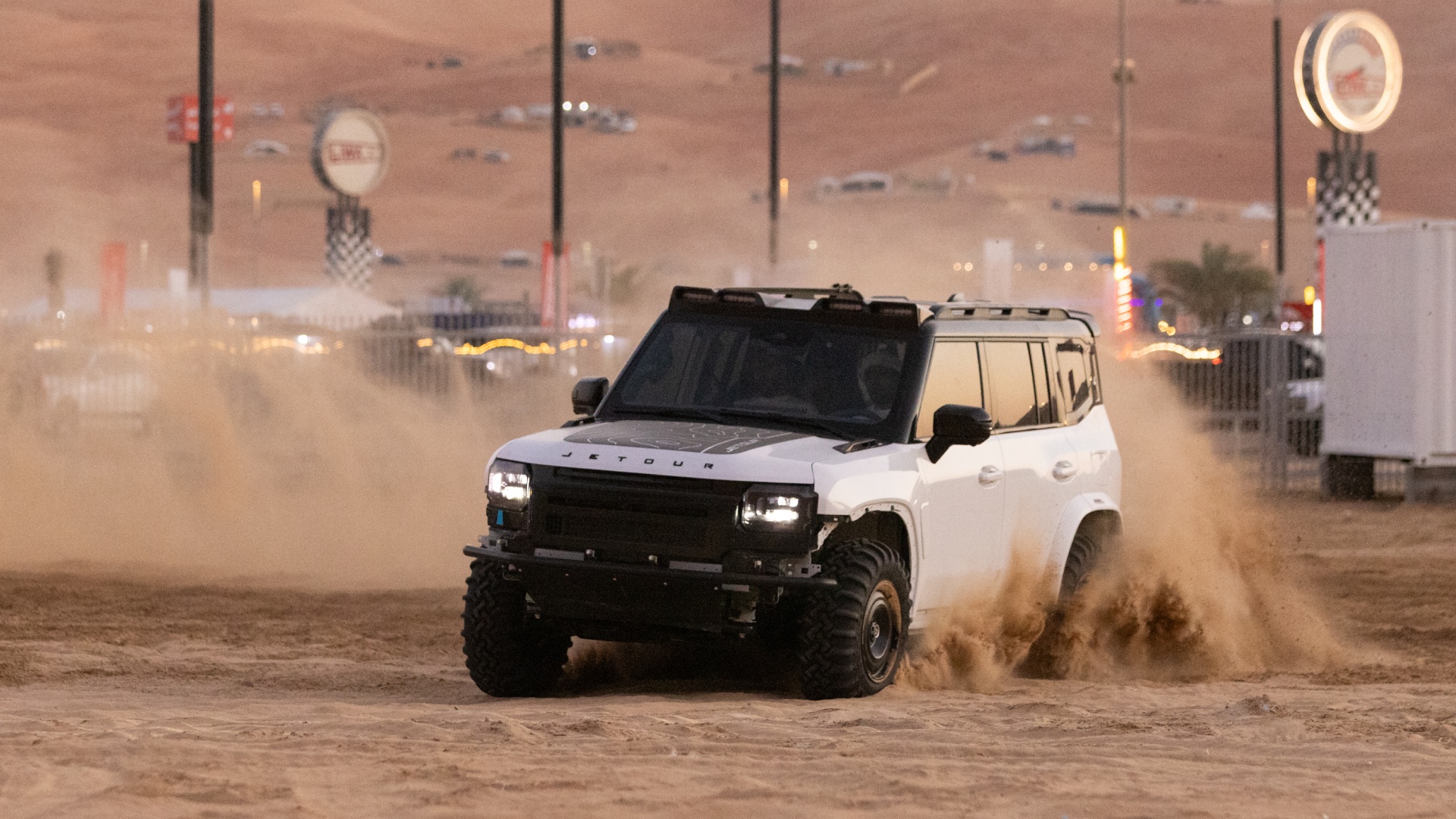
Jetour, in exclusive partnership with Elite Group Holding in the UAE, has officially kicked off the Liwa International Festival 2026 with a dynamic brand presence designed to celebrate adventure, culture, and community. As the festival opens its doors for a 23-day celebration in the Al Dhafra region, Jetour stands front and centre, welcoming visitors with interactive displays, premium experiences, and thrilling off-road moments that embody the spirit of Travel+.
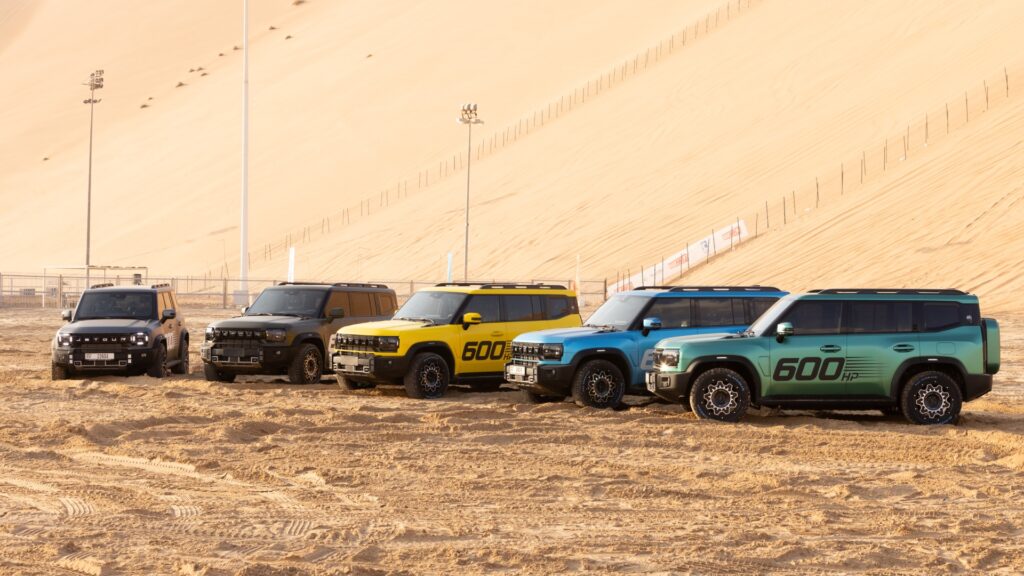
Recognised as one of the UAE’s most anticipated annual events, the Liwa International Festival welcomes thousands of visitors for an unforgettable celebration of heritage, motorsport, and entertainment. Set against the dramatic backdrop of Al Dhafra’s golden dunes, the festival features an extraordinary line-up of cultural showcases, high-energy competitions, nightly performances, and family-friendly attractions, all paying homage to the UAE’s deep connection to its desert traditions.
For the 2026 edition, Jetour will elevate the festival experience with a comprehensive presence across multiple zones, showcasing the brand’s innovation, exploration, and community engagement. Attendees can enjoy interactive test drives alongside lifestyle-driven hospitality experiences, with Jetour’s showcase crafted to highlight the versatility, capability, and premium comfort of its SUV line-up.
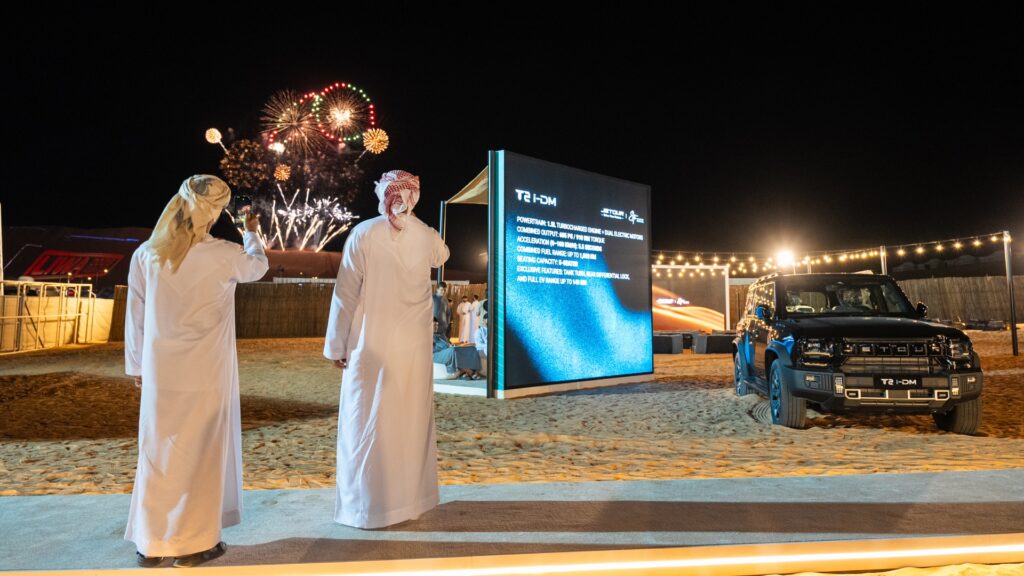
At the heart of the activation was the Jetour VIP Camp. During the first week, from December 12th to 14th, guests experienced a range of immersive cultural activities, including Arabic Tanoora performances, oud sessions, falconry, henna artistry, and traditional Dalla service. Additional weekends bring a world-music DJ fusion with international drummers and performers from December 19th to 21st, followed by an Eastern-inspired programme from December 26th to 28th featuring a Dragon show, Chinese calligraphy, Bian Lian performances, tea tasting, and more. Throughout the entire festival, the VIP Camp will boast a Majlis, outdoor cinema, refreshments, giant board games, neon installations, volleyball, and a photobooth, creating an elevated retreat for families and adventure-seekers.
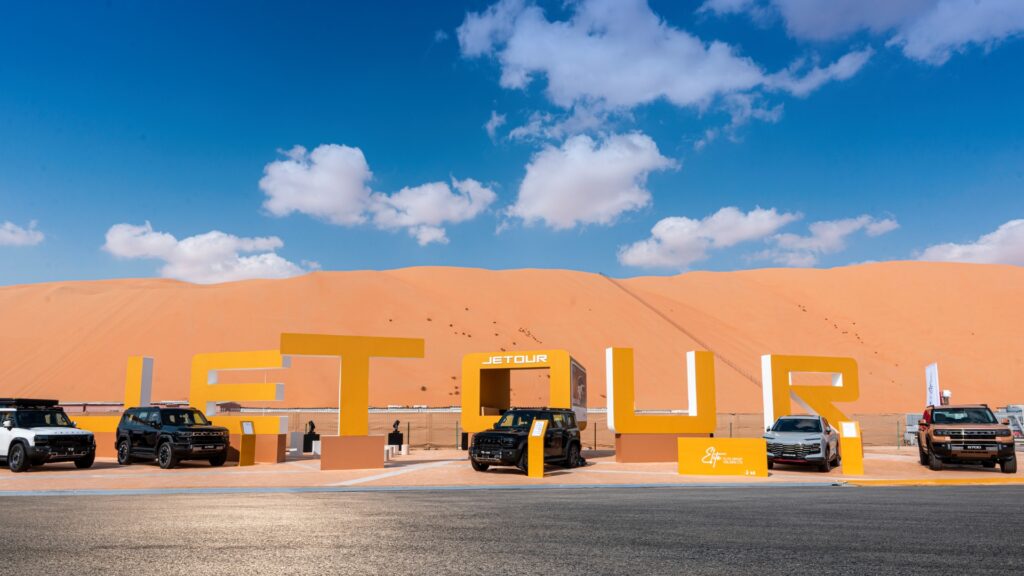
In the Corporate Area, Jetour presents a fully branded showroom-style display active from December 12th to January 3rd, featuring flagship SUVs including the G700, T2 i-DM 4WD, T2 Luxury Plus, T1, and Dashing. As the festival reaches its peak, Jetour will also command attention at Tal Moreeb from December 31st to January 3rd, where the imposing G700 takes centre stage beside the grandstand culminating with a spectacular New Year’s Eve show and fireworks.
“Our participation at this year’s Liwa Festival reflects Jetour’s passion for connecting with communities through truly immersive experiences,” said Haroon Hayat, Group CFO of Elite Group Holding. “Moments like this remind us that personal achievements are only possible when backed by the dedication of an exceptional team. We are proud to bring Jetour’s adventurous DNA to one of the UAE’s most celebrated cultural gatherings.”
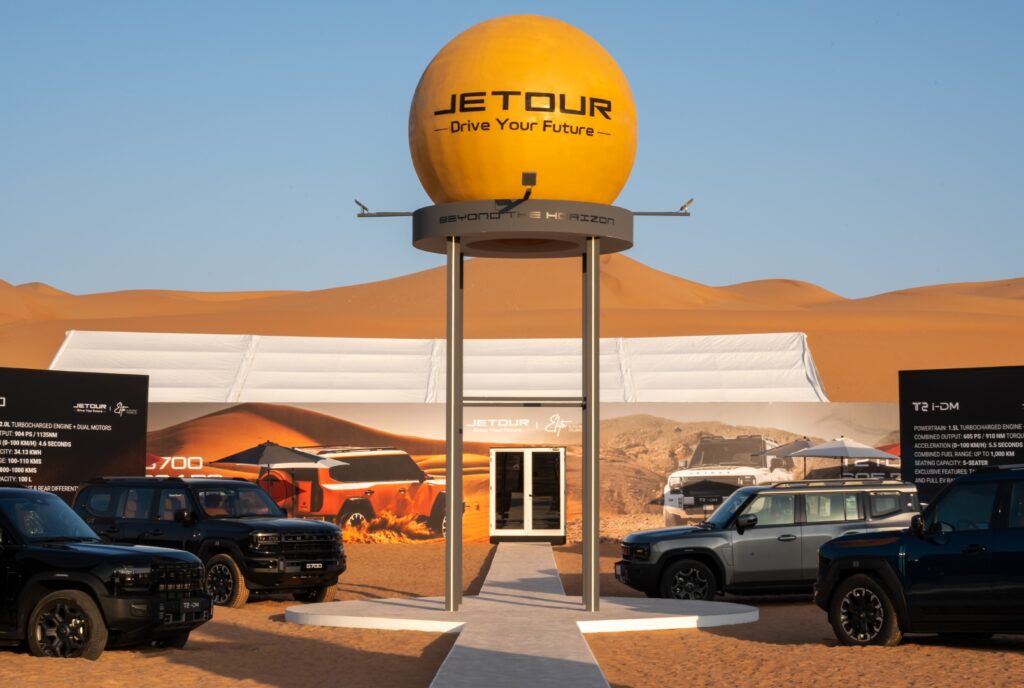
Jetour, under the exclusive distributorship of Elite Group Holding, continues to redefine the UAE’s SUV landscape with its Travel+ philosophy, delivering innovation, intelligent design, and powerful performance tailored for modern lifestyles. With a growing presence across the Emirates, Jetour’s premium SUV line-up is crafted for drivers who value capability, comfort, and discovery across both city roads and rugged terrain.
As Liwa International Festival 2026 begins its annual celebration of heritage and adventure, Jetour is ready to take attendees on a journey of excitement and discovery that captures the true essence of Travel+.
Automotive
Emarat reinforces lubricants leadership at Automechanika Dubai 2025

Emirates Petroleum Company PJSC (Emarat), a pioneer in the UAE’s oil and gas industry, showcased latest portfolio of lubricants during Automechanika Dubai 2025. As per reports, UAE lubricants demand is forecast to reach 200 million litres by 2030.
With a lubricants business built over more than three decades of manufacturing and global marketing, Emarat’s presence at the exhibition focussed on strengthening channel partnerships, expanding regional reach, and demonstrating performance-led formulations aligned with today’s engine requirements and operating conditions.
On the sidelines of Automechanika Dubai 2025, Emarat’s lubricants team also hosted partner engagements at the stand, including signing landmark agreements to enter into new markets like Armenia and Mauritius with organized partners focusing on distribution and market development. These agreements focused on consolidation of commercial market and growth in Mauritius with Concorde Auto Parts Co. LTD and also emerge into lubricant market alongside Emarat fuel station network with MEGA TRADE L.L.C. in Armenia.
Burny Johnson, Senior Vice President, Lubricants, Emarat, said, “Automechanika Dubai is a decisive platform for the aftermarket where product credibility is tested and long-term supply partnerships are built. Over the past year, we have strengthened the technical advantages of our portfolio to meet industry norms and the real expectations of end users including reliability, protection of critical components, and uptime. Alongside showcasing our latest formulations, we focused on expanding our distributor footprint starting with three new market partnerships that deepened reach and built momentum for the next phase of growth.”
“Looking ahead to 2030, we have clear ambitions in the UAE and beyond, to expand our lubricants business across several countries. We are committed to raising standards, delivering value for partners and customers, and helping shape a more performance-driven lubricants ecosystem,” added Burny.
Emarat displayed a curated selection of its lubricants across pack sizes during the show. The range included 4-litre packs of Power Ultima 0W-16, Power Synth 5W40, XAT SUV, Power Plus, Gear Max HY, and Ultra Cool 50; 5-litre packs of Power Thrust Plus 15W40 and Power Optima 5W40 CK-4; and 1-litre packs of Power Bike 4T, Power Synth 5W30, XAT SUV, Power Plus 20W50, Ultra Cool, and TransMax.
Emarat also hosted its regional partners during the event including Foshan Jian Fu Hong Trading Co. Ltd., Alliance Tractors, Dynatrade LLC, and AW Rostamani Trading Co LLC among other global partners.
Furthermore, market outlook indicators continue to underline the scale of the category, with one leading industry forecast estimating the global lubricants market will reach USD 180 billion by 2030. According to Mordor Intelligence, lubricants demand in the UAE is forecast to reach 200 million litres by 2030.
Automotive
General Motors Appoints Jorge Plata to Lead Africa & Middle East Operations

General Motors (GM) announced a leadership transition for its Africa and Middle East Operations, as the business drives to lead the roll-out of personal autonomous technologies and digital services, deployed in world-class vehicles from brands that customers know and trust.
Jorge Plata, currently vice president Sales, Service and Marketing at GM Mexico, Central America and Caribbean will take on the role of president and managing director GM AMEO, effective March 1, 2026.
Plata will succeed Jack Uppal who will move to the position of president and managing director GM Canada, after three years leading GM AMEO.
GM president, EMEA and ANZ Michael MacPhee said that during his time at GM Mexico, Plata has led the strategy to ensure GM continues to be a leading player in one of the most dynamic markets in the world.
“Jorge has a proven track record of focusing on our customers, sustaining trusted brands and building strong partnerships so GM can compete strongly against long-time rivals and new entrants,” said MacPhee.
“As GM prepares to celebrate its centenary in the Middle East and Africa, we are determined to build on our deep connection with customers, partners and government, to chart the course of GM’s next century in the region.”
Plata said: “This is an incredible time lead the AMEO business for GM. We have a world-class portfolio of connected vehicles, and we are leading the region with new technologies like hands-free, eyes-on Super Cruise.”
“I look forward to working with our dealers, partners – and of course our talented GM team – to shape the future of transportation in the region. I’m energized by the region’s bold ambitions and dynamic landscape, and GM sees great opportunities and a bright future in the Middle East and Africa.”
MacPhee thanked Uppal for his leadership of the AMEO business and wished him well in his new role.
“Jack not only delivered consistent growth, he developed deep relationships across the region and led a strategy to bring more choice and technology to our customers – across price points and propulsion systems,” said MacPhee. “He also spearheaded the turnaround of the GM Egypt business, restoring Chevrolet to the market leadership position.”
Uppal said: “Serving as the leader of GM Africa & Middle East over the past three years has been an incredibly rewarding experience. Together, we have delivered vehicles that excite our customers and achieved this alongside an exceptionally talented team. With his extensive experience, Jorge is well poised to sustain this momentum and guide the region toward continued success.”
-

 Tech News1 year ago
Tech News1 year agoDenodo Bolsters Executive Team by Hiring Christophe Culine as its Chief Revenue Officer
-

 VAR8 months ago
VAR8 months agoMicrosoft Launches New Surface Copilot+ PCs for Business
-

 Tech Interviews2 years ago
Tech Interviews2 years agoNavigating the Cybersecurity Landscape in Hybrid Work Environments
-

 Tech News5 months ago
Tech News5 months agoNothing Launches flagship Nothing Phone (3) and Headphone (1) in theme with the Iconic Museum of the Future in Dubai
-

 Tech News2 years ago
Tech News2 years agoBrighton College Abu Dhabi and Brighton College Al Ain Donate 954 IT Devices in Support of ‘Donate Your Own Device’ Campaign
-

 VAR1 year ago
VAR1 year agoSamsung Galaxy Z Fold6 vs Google Pixel 9 Pro Fold: Clash Of The Folding Phenoms
-

 Editorial1 year ago
Editorial1 year agoCelebrating UAE National Day: A Legacy of Leadership and Technological Innovation
-

 Cover Story10 months ago
Cover Story10 months agoUnifonic Leading the Future of AI-Driven Customer Engagement













